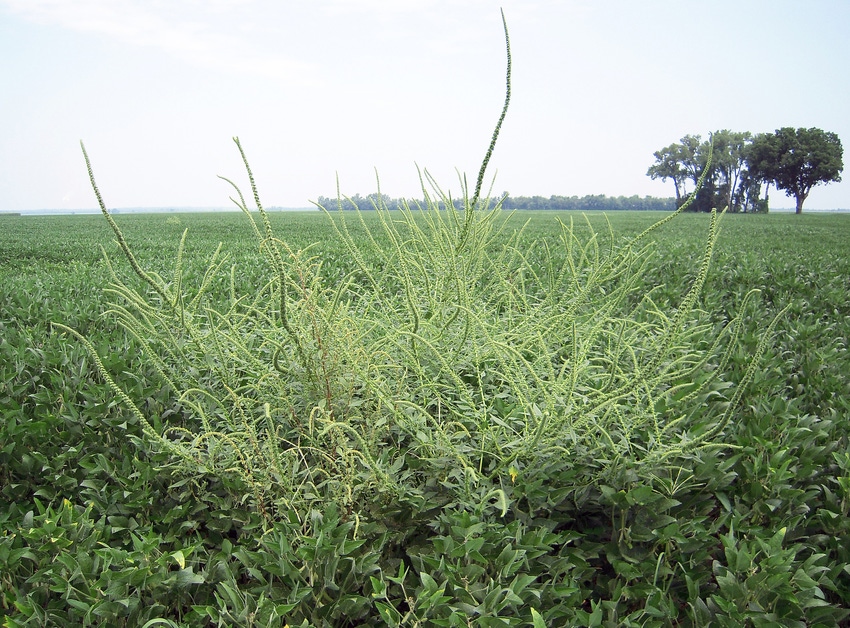Grain and seed screenings used as animal feed may be contaminated with invasive weed, and seeds may then travel to crop fields via livestock manure.
May 3, 2019

The Minnesota Department of Agriculture (MDA) has found a new route for the invasive weed Palmer amaranth to enter and spread through Minnesota: grain and seed screenings used as animal feed.
After an investigation into a Palmer amaranth find in Redwood County, Minn., MDA said it determined thatthe weed found its way into a soybean field through cattle manure. The cattle had been fed screenings from contaminated sunflower seed.
MDA has since sampled screenings throughout the state and has found Palmer amaranth seed in numerous screenings — some containing as much as 250 Palmer amaranth seeds per pound of screenings.
“This newly discovered path for Palmer amaranth shows the difficultly in stopping the spread of invasive weeds,” Minnesota agriculture commissioner Thom Petersen said. “However, MDA is committed to continuing our monitoring of screenings, educating crop and livestock farmers about this development and helping eradicate any new finds.”
Palmer amaranth was first discovered in Minnesota in 2016. Since then, it has been found in six counties in the state. However, because of eradication efforts at confirmed sites and a strong partnership with the University of Minnesota Extension, no Palmer amaranth has been found in subsequent growing seasons until the recent finding in Redwood County.
Palmer amaranth can grow 2-3 in. a day, typically reaching 6-8 ft. or more in height, MDA said. Left uncontrolled, a single female Palmer amaranth plant typically produces 100,000-500,000 seeds. It is resistant to multiple herbicides, can cause substantial yield losses and can greatly increase weed management costs in soybeans and corn, MDA added.
MDA is encouraging farmers, especially those who spread manure from feedlots on their land, to look for Palmer amaranth and report suspect plants.
The invasive weed is native to the southwestern U.S. and northwestern Mexico and has been found in more than half of the states, including Iowa, North Dakota, South Dakota and Wisconsin.
Source: Minnesota Department of Agriculture, which is solely responsible for the information provided and is wholly owned by the source. Informa Business Media and all its subsidiaries are not responsible for any of the content contained in this information asset.
You May Also Like


.png?width=300&auto=webp&quality=80&disable=upscale)
